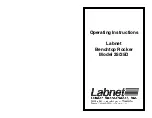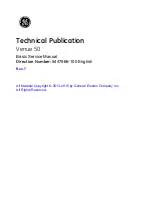
52
8-4-2 Concurrent
Measurements
To obtain accurate results from the mass concentration measurement method, the filter must
capture at least 0.500 mg of sample. Therefore, first the corresponding sampling time must
be determined.
Determining the Sampling Time
(1) Operate the dust monitor continuously for 24 hours to determine the average
concentration (mg/m
3
).
Note: Measure for 24 hours using the timed measurement mode. (For instructions on
using the timed measurement mode, see page 44.)
Note: Check the log data to calculate the average concentration based on the average
concentration logged at 60-minute intervals.
(For information about log data, see page 32.)
(2) Calculate the pump suction flowrate based on "1.7 L/min
×
60 / 1000."
(Converts the units for the pump suction flowrate from L/min to m
3
/hr.)
(3) Multiply the result from (1) (mg/m
3
) by the result from (2) (m
3
/hr).
(Indicates the mass of particles accumulated during one hour (mg/hr).)
(4) Divide 0.500 mg by the result from (3) (mg/hr).
(This determines the number of hours necessary to accumulate 0.500 mg.)
Example:
(1) Average concentration for 24 hours = 0.035 mg/m
3
(2) The flowrate is 1.7 L/min
×
60 / 1000 = 0.102 m
3
/hr
(3) 0.035 mg/m
3
×
0.102 m
3
/hr = 0.00357 mg/hr
(4) 0.500 mg / 0.00357 mg/hr = 140.056
Therefore, at least 140 hours of sampling is required to collect 0.500 mg of sample.
Concurrent Measurement Procedure
(1) Used the timed measurement mode to measure the dust for the sampling time
determined in the previous section.
(2) When the measurement is finished, remove and weigh the filter.
→
Dirty filter weight
(DFW) after sampling
(3) Check the log data to calculate the average concentration for the entire sampling time.
→
Average light-scattering concentration (LSC)
















































